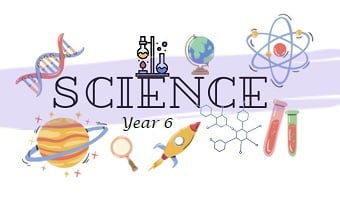Science for Year 6
School Education divided into 13 grade levels. Each grade level has certain standards for different skills. Teacher’s job is to detect students’ real year level and her/his needs to continue her/his academic development.
A comprehensive set of progressive learning objectives for science year 6. The objectives detail what the learner should know or what they should be able to do in science in year 6 of primary education.
E Scientific inquiry
Ep Ideas and evidence
• 6Ep1 Consider how scientists have combined evidence from observation and measurement with creative thinking to suggest new ideas and explanations for phenomena.
• 6Ep2 Collect evidence and data to test ideas including predictions.
Ep Plan investigative work
• 6Ep3 Discuss how to turn ideas into a form that can be tested.
• 6Ep4 Make predictions using scientific knowledge and understanding.
• 6Ep5 Choose what evidence to collect to investigate a question, ensuring that the evidence is sufficient.
• 6Ep6 Identify factors that are relevant to a particular situation.
• 6Ep7 Choose which equipment to use.
Eo Obtain and present evidence
• 6Eo1 Make a variety of relevant observations and measurements using simple apparatus correctly.
• 6Eo2 Decide when observations and measurements need to be checked by repeating to give more reliable data.
• 6Eo3 Use tables, bar charts and line graphs to present results.
Eo Consider evidence and approach
• 6Eo4 Make comparisons.
• 6Eo5 Evaluate repeated results.
• 6Eo6 Identify patterns in results and results that do not appear to fit the pattern.
• 6Eo7 Use results to draw conclusions and to make further predictions.
• 6Eo8 Suggest and evaluate explanations for predictions using scientific knowledge and understanding and communicate these clearly to others.
• 6Eo9 Say if and how evidence supports any prediction made.
B Biology
Bh Humans and animals
• 6Bh1 Use scientific names for some major organs of body systems.
• 6Bh2 Identify the position of major organs in the body.
• 6Bh3 Describe the main functions of the major organs of the body.
• 6Bh4 Explain how the functions of the major organs are essential.
Be Living things in their environment
• 6Be1 Explore how humans have positive and negative effects on the environment, e.g. loss of species, protection of habitats.
• 6Be2 Explore a number of ways of caring for the environment, e.g. recycling, reducing waste, reducing energy consumption, not littering, encouraging others to care for the environment.
• 6Be3 Know how food chains can be used to represent feeding relationships in a habitat and present these in text and diagrams.
• 6Be4 Know that food chains begin with a plant (the producer), which uses energy from the sun.
• 6Be5 Understand the terms producer, consumer, predator and prey.
• 6Be6 Explore and construct food chains in a particular habitat.
C Chemistry
Cc Material changes
• 6Cc1 Distinguish between reversible and irreversible changes.
• 6Cc2 Explore how solids can be mixed and how it is often possible to separate them again.
• 6Cc3 Observe, describe, record and begin to explain changes that occur when some solids are added to water.
• 6Cc4 Explore how, when solids do not dissolve or react with water, they can be separated by filtering, which is similar to sieving.
• 6Cc5 Explore how some solids dissolve in water to form solutions and, although the solid cannot be seen, the substance is still present.
P Physics
Pf Forces and motion
• 6Pf1 Distinguish between mass measured in kilograms (kg) and weight measured in newtons, noting that kilograms are used in everyday life.
• 6Pf2 Recognise and use units of force, mass and weight and identify the direction in which forces act.
• 6Pf3 Understand the notion of energy in movement.
• 6Pf4 Recognise friction (including air resistance) as a force which can affect the speed at which objects move and which sometimes stops things moving.
Pm Electricity and magnetism
• 6Pm1 Investigate how some materials are better conductors of electricity than others.
• 6Pm2 Investigate how some metals are good conductors of electricity while most other materials are not.
• 6Pm3 Know why metals are used for cables and wires and why plastics are used to cover wires and as covers for plugs and switches.
• 6Pm4 Predict and test the effects of making changes to circuits, including length or thickness of wire and the number and type of components.
• 6Pm5 Represent series circuits with drawings and conventional symbols.
If you are thinking to take in a small group (2-3 people) OR
Do you have any question? Please





Reviews
There are no reviews yet.